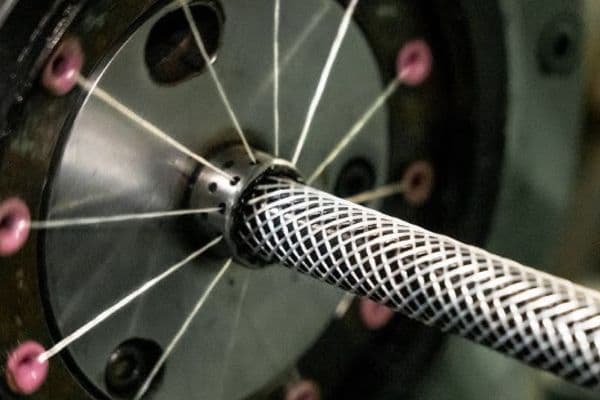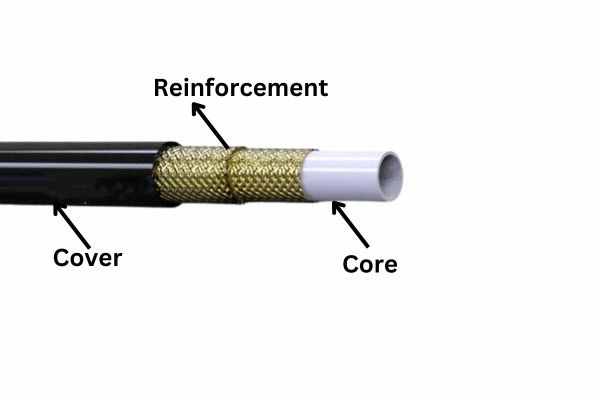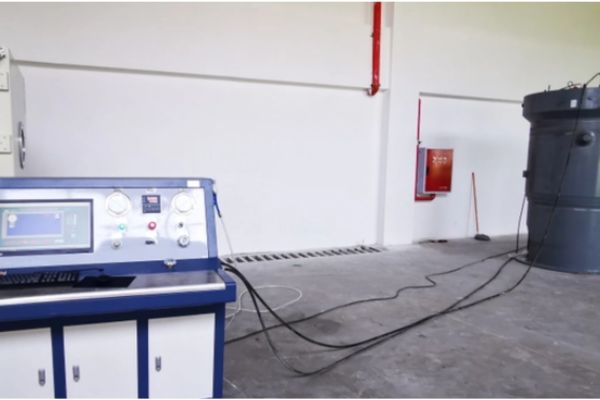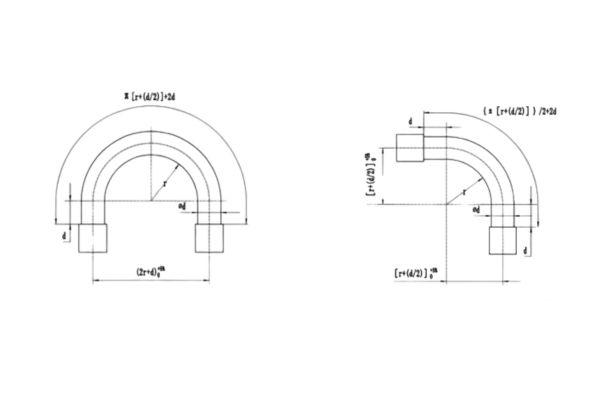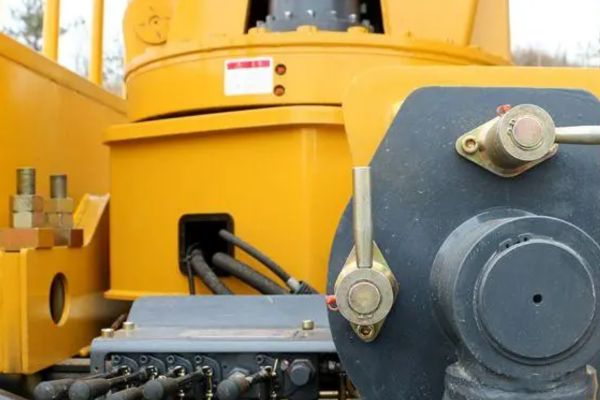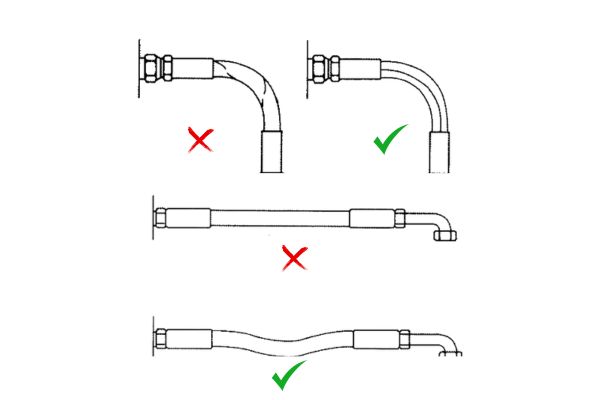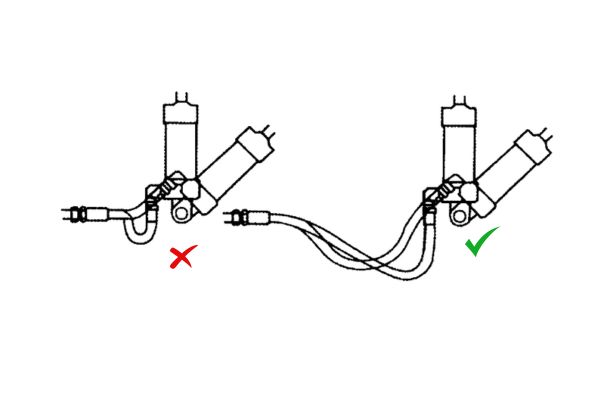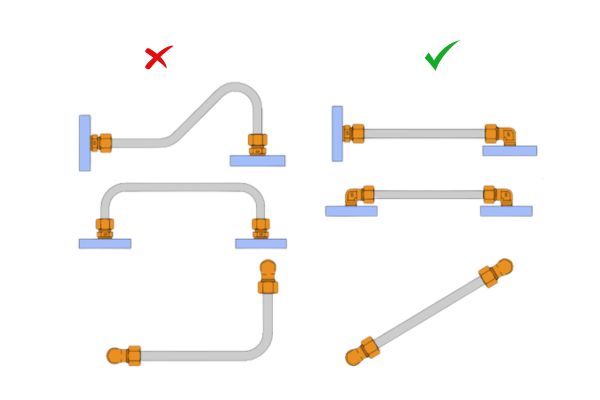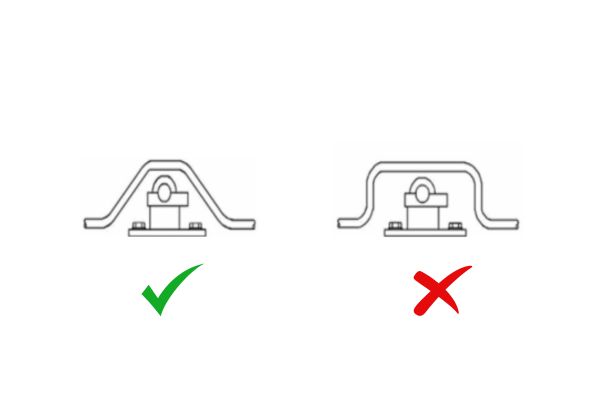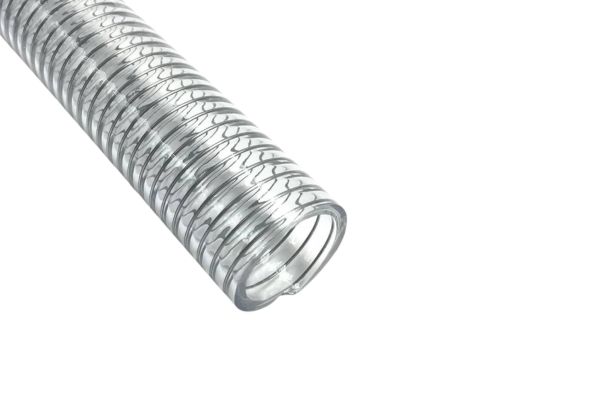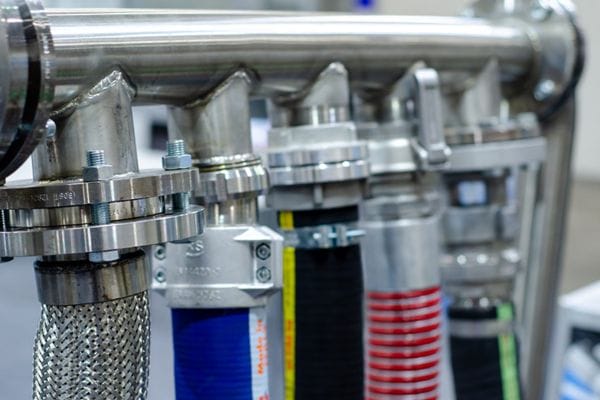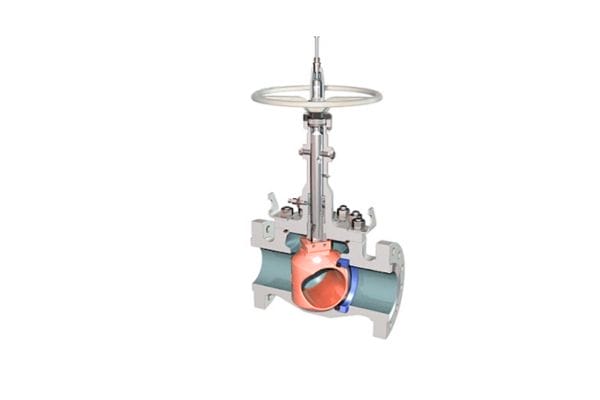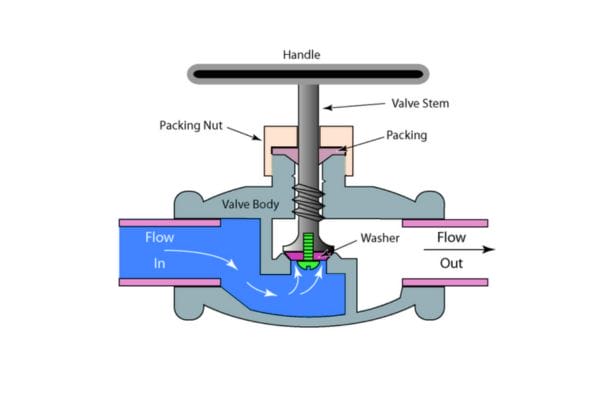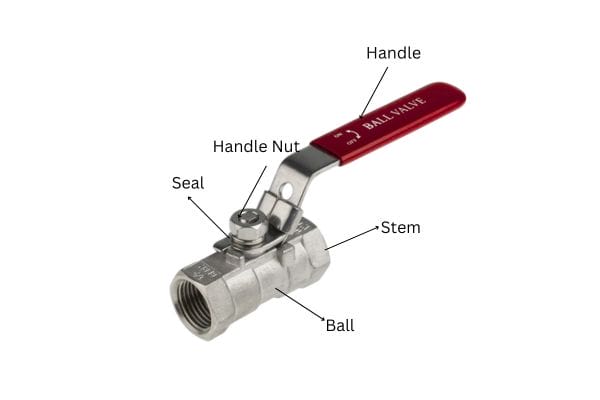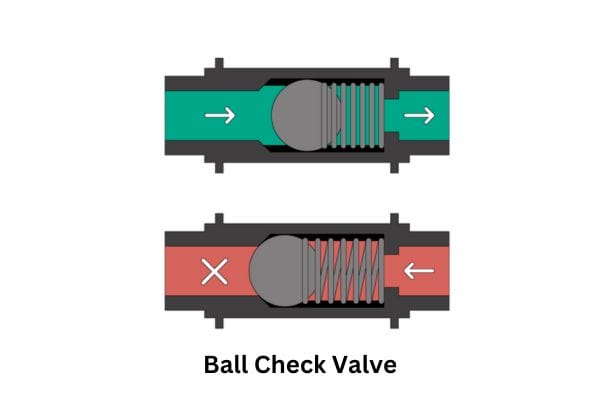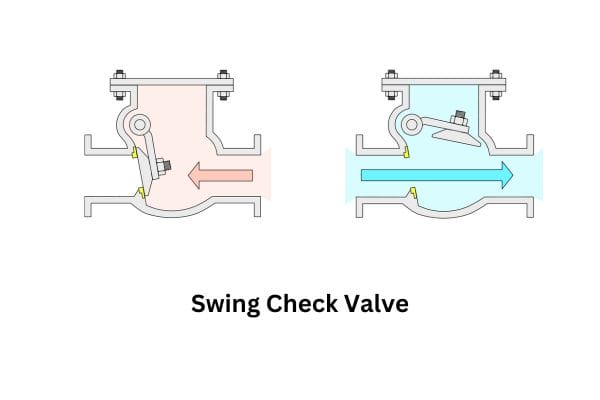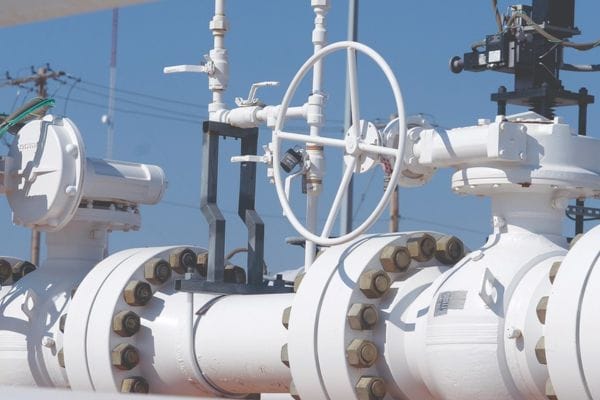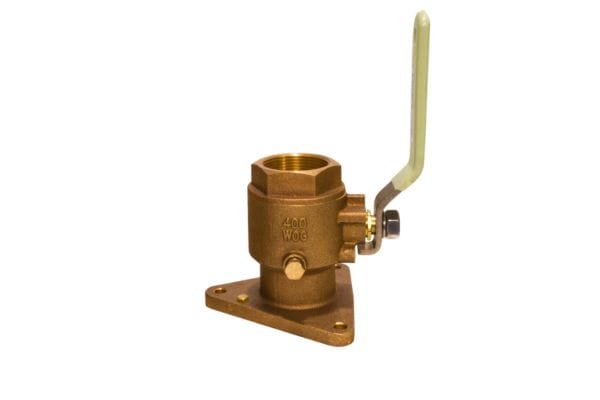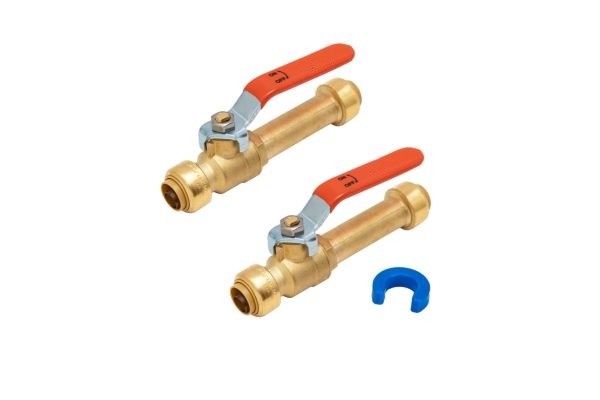The costs of neglected hose maintenance go beyond just repairing or replacing a broken hose. When hoses fail, businesses often face downtime, which leads to productivity loss and operational delays. For many industries, downtime is one of the most expensive costs, as it halts production, disrupts workflows, and leads to missed deadlines. In addition, reactive repairs are almost always more expensive than proactive, scheduled maintenance. Preventing hose failures through regular maintenance can significantly reduce the risk of costly, unforeseen breakdowns.
The Common Causes of Hose Failures
Wear and Tear
Hoses in industrial systems face constant use, which inevitably leads to wear and tear. Over time, the material of the hose weakens, losing its ability to withstand the pressure, temperature, and environmental conditions it was designed to handle. This gradual degradation can go unnoticed at first, but if left unchecked, it will eventually cause the hose to fail.
Identifying the types of wear that commonly affect industrial hoses is crucial to understanding the lifespan of your hoses. Some of the most common types of wear include:
Abrasion: Caused by constant movement, rubbing against surfaces, or exposure to rough environments.
Flexing: Continuous bending or twisting of the hose can stress the material, leading to cracks or breaks.
Surface Degradation: Exposure to chemicals, oils, and extreme temperatures can weaken the hose’s outer layer, making it prone to failure.
Abrasion, flexing, and exposure are all types of wear that can weaken the hose material over time. A hose subjected to excessive wear and tear may have its internal structure compromised, leading to cracks, leaks, or sudden bursts under pressure. Regular inspections and proactive maintenance are essential to catch these issues before they lead to costly downtime.
Environmental Factors and Their Impact on Hose Durability
The environment in which industrial hoses operate plays a critical role in their longevity. Hoses exposed to extreme temperatures, UV radiation, and harsh chemicals can degrade much faster than those used in controlled environments. Here’s how environmental factors can accelerate hose damage:
Temperature Extremes: Both high and low temperatures can cause hoses to become brittle, crack, or lose flexibility. In freezing temperatures, hoses may become stiff and more prone to breakage, while high temperatures can cause hoses to soften, leading to leaks and failure.
UV Exposure: Prolonged exposure to UV rays from sunlight can cause hoses made of rubber or plastic to dry out, crack, and deteriorate. UV damage can also weaken the hose’s structural integrity, making it more susceptible to failure under pressure.
Chemical Contact: Certain chemicals, oils, and solvents can break down hose materials, particularly if the hoses are not made of materials resistant to those substances. For instance, exposure to aggressive chemicals like acids or solvents can cause hoses to swell, crack, or become brittle.
Additionally, weather conditions such as rain, humidity, and dust can further damage hoses. Rain can introduce moisture into the system, which can cause corrosion, especially in metal fittings or unprotected areas of the hose. Dust and dirt can clog the hose, restricting flow and causing internal wear. The combination of these environmental factors can significantly reduce the lifespan of your hoses, making it essential to select hoses with materials designed for specific environmental conditions.

Improper Hose Installation
Another common cause of hose failure is improper installation. While it may seem like an afterthought, the way hoses are installed plays a crucial role in their long-term performance. Common installation mistakes can lead to issues like misalignment, kinks, and stress on the hose that significantly shortens its lifespan.
Here are some key installation mistakes to watch out for:
Incorrect Alignment: When hoses are not properly aligned with their connections, they are subject to unnecessary stress. Misalignment can lead to bends, leaks, and eventual rupture.
Bending Radius: Every hose has a specified minimum bending radius—the tightest curve a hose can bend without risking internal damage. Exceeding this radius can cause the hose to kink or crack.
Improper Securing: Hoses that are not securely fastened can shift and rub against other surfaces or machinery, leading to abrasion and wear. Additionally, unsecured hoses are more likely to be exposed to extreme movements or vibrations, which can weaken the hose over time.
Kinks and Twists: Hoses should never be twisted or kinked during installation. A kink or twist increases the pressure at that point, restricting flow and increasing the risk of rupture.
To avoid these installation issues, ensure that hoses are installed according to the manufacturer’s guidelines. Pay close attention to alignment, the minimum bending radius, and securing hoses in place to prevent unnecessary strain. When installed correctly, hoses can last longer and operate more efficiently, reducing the likelihood of failure.
Over-Pressurization: How Pressure Affects Hose Performance
One of the most critical factors affecting the performance and lifespan of industrial hoses is over-pressurization. When the pressure within the hose exceeds the recommended limit, it can cause severe damage, including hose bursts, leaks, and even system failure.
The impact of excessive pressure on hose lifespan is twofold:
Physical Damage: High pressure can cause the hose to swell, rupture, or burst, leading to sudden failures. The higher the pressure, the more stress is placed on the hose material, which can accelerate wear and tear.
Material Fatigue: Constant exposure to fluctuating pressure can cause the hose material to weaken over time. The repeated expansion and contraction of the hose under pressure can cause fatigue, eventually leading to cracks and leaks.
In hydraulic systems, where pressure fluctuations are common, hoses are particularly vulnerable. Excessive pressure or rapid pressure changes can cause hoses to burst, resulting in expensive downtime and safety hazards. To prevent over-pressurization, it’s essential to monitor the pressure regularly and ensure that the hoses are rated for the pressure they will experience.
Building an Effective Hose Maintenance Program
The Key Elements of a Successful Hose Maintenance Plan
A well-designed hose maintenance program is vital for extending the lifespan of hoses and preventing unexpected failures. Key elements of a successful plan include:
Identifying Critical Hoses and Their Role in the System: Not all hoses in an industrial system are equally important. Identifying which hoses are critical to your system’s performance helps prioritize maintenance efforts. High-pressure hoses, those carrying dangerous fluids, or hoses in sensitive machinery should be inspected more frequently.
Determining the Right Inspection Frequency: The inspection frequency will vary depending on the hose type, the environment it’s exposed to, and its function within the system. For example, hoses in harsh environments (e.g., high temperatures or chemical exposure) may need more frequent checks than those in cleaner, controlled environments.
Integrating Hose Maintenance with Overall Industrial Equipment Maintenance Schedules: Hose inspections shouldn’t be treated as isolated tasks. Integrating hose maintenance with general equipment maintenance schedules ensures that all parts of the system are working optimally. Regularly scheduled checks allow for seamless operation without significant downtime.
Establishing Clear Procedures for Maintenance, Inspections, and Replacements: Clearly define the steps for inspecting, maintaining, and replacing hoses. This includes ensuring technicians follow specific protocols for checking wear, documenting findings, and replacing hoses that have reached their end-of-life.
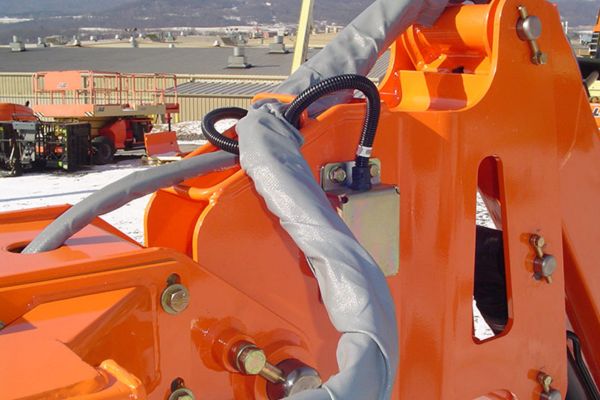
Creating a Hose Maintenance Checklist
A well-documented checklist is a valuable tool for regular hose inspections. It ensures that all critical aspects of the hose’s condition are assessed and allows for consistent tracking over time. Here are the key points to include:
Key Points to Include in a Thorough Hose Inspection Checklist:
Hose type, model, and specifications
Date of last inspection
Condition of fittings and connections
Visual signs of damage, cracks, or bulges
Hose alignment and routing within the system
Proper installation of clamps and supports
How to Assess Hose Condition: Visual, Tactile, and Pressure Checks:
Visual: Look for external damage, cuts, abrasions, and cracks that may compromise the hose.
Tactile: Feel for soft spots or areas where the hose feels weak. Check for stiffness or brittleness which can indicate material degradation.
Pressure Checks: Regularly check the hose’s pressure resistance to ensure it remains within safe operating limits.
Red Flags to Watch For: Leaks, Bulges, Cracks, and Material Degradation:
Leaks around hose fittings or along the hose body are clear signs of a problem.
Bulging is usually a sign of internal damage, often caused by over-pressurization.
Cracks or visible wear on the hose surface can be indicative of stress, chemical exposure, or age.
Material degradation can result from UV exposure, heat, or chemicals, weakening the hose’s structural integrity.
Documenting Findings and Maintaining a Historical Record for Future Reference: Documenting each inspection and maintenance event is essential. A well-maintained historical record allows you to track the performance of each hose over time, helping predict future maintenance needs and identifying patterns of wear that may require a redesign or system upgrade.
Setting Up a Scheduled Maintenance System
Implementing a proactive maintenance system is essential for preventing emergency repairs and minimizing downtime. A scheduled maintenance system ensures that hose inspections and replacements are performed regularly and in alignment with system needs.
The Benefits of Implementing a Proactive Maintenance System Over Reactive Repairs:
Reduced Downtime: Scheduled maintenance minimizes unexpected hose failures, reducing the time your equipment is out of service.
Cost Savings: Proactive maintenance helps avoid expensive emergency repairs, which are often more costly and time-consuming than regular check-ups.
Extended Hose Life: Regular maintenance identifies minor issues before they develop into major problems, thus extending the overall lifespan of the hoses.
How to Set Up Regular Inspection Intervals Based on Usage and Environmental Factors: The inspection frequency should be adjusted according to the hose’s usage intensity and environmental exposure. For example, hoses in heavy-use areas or extreme conditions (e.g., high heat, chemicals, or physical abrasion) will require more frequent checks compared to those in controlled environments. Create a matrix that matches hose types with inspection intervals for each unique situation.
Coordinating Maintenance During Off-Peak Hours to Minimize Downtime: Schedule maintenance during non-peak production hours to ensure that critical systems can remain operational. This approach reduces the disruption to daily operations and helps keep productivity levels consistent.
Using Digital Tools and Software to Track and Schedule Hose Inspections and Replacements: Implement digital maintenance management systems (CMMS) that can automate the tracking of hose inspections and maintenance tasks. This technology can send alerts when it’s time for an inspection, and store records of completed maintenance work. Using software tools ensures that no inspections are missed and that maintenance is performed according to schedule.
Establishing a Hose Management Program for Long-Term Success
A comprehensive hose management program is key to maintaining system efficiency and avoiding costly failures over time.
The Importance of a Comprehensive Hose Management Strategy for Operational Efficiency: Having a clear hose management strategy ensures that all hoses are properly maintained, inspected, and replaced when necessary. A structured program enhances overall system efficiency by ensuring that hoses continue to perform as expected without interruption. Regular reviews of your hose management program allow you to identify areas for improvement and optimize system performance.
Training Staff on Proper Hose Care, Identification, and Troubleshooting Techniques: Proper staff training is essential for the success of any maintenance program. Operators and maintenance personnel should be equipped with knowledge on how to identify worn hoses, how to perform simple troubleshooting, and how to execute routine inspections. Educating staff about hose care and maintenance practices ensures that issues are detected early, reducing the likelihood of equipment failure.
Implementing Data-Driven Approaches: Monitoring Hose Performance Metrics and Trends: Use data analytics to monitor hose performance over time. Tracking metrics such as pressure fluctuations, hose temperature, and usage rates allows for a more targeted approach to maintenance. Identifying trends or patterns in hose failure can lead to more proactive decisions about replacement schedules and material improvements.
Continuously Optimizing Your Hose Management Plan Based on System Performance and Evolving Needs: As your industrial system evolves, so should your hose management program. Regularly assess the performance of your hoses and adjust your maintenance plan accordingly. Factors such as changes in production processes, environmental conditions, and system upgrades may require modifications to your maintenance strategy. Staying flexible and proactive ensures that your hose management program remains aligned with your operational goals.
Best Practices for Industrial Hose Maintenance
Regular Hose Inspections: How Often Should You Check?
Routine hose inspections are a cornerstone of a proactive maintenance program, helping to detect issues before they lead to catastrophic failures. Regular inspections prevent costly downtime and improve overall system reliability.
Understanding the Importance of Routine Inspections for Preventing Failures: Regular inspections help identify wear and tear, leaks, and other issues early on, enabling timely repairs or replacements. This proactive approach is essential in preventing unplanned shutdowns and preserving system integrity.
Factors Influencing Inspection Frequency: The inspection frequency depends on various factors such as:
Hose Type: High-pressure hoses or hoses carrying hazardous materials may require more frequent checks.
Environment: Extreme temperatures, chemical exposure, and harsh conditions can accelerate wear, necessitating more regular inspections.
Usage: The more frequently a hose is used or exposed to stress, the more often it should be checked.
How to Perform a Thorough Inspection: A detailed inspection involves more than just a visual check. Focus on:
Fittings and Connections: Check for leaks, corrosion, or any loose connections.
Hose Surface: Look for abrasions, bulges, cracks, or other signs of wear.
Internal Wear: Use pressure testing and flow monitoring to assess internal integrity.
Flexing and Bending Areas: Inspect places where the hose frequently bends or flexes, as these areas are more prone to damage.
The Role of Condition Monitoring Tools in Making Inspections More Efficient: Digital tools and sensors can make inspections more precise. Pressure sensors, temperature gauges, and visual inspection cameras can provide real-time data, helping technicians to identify early-stage failures that might be missed during manual checks.
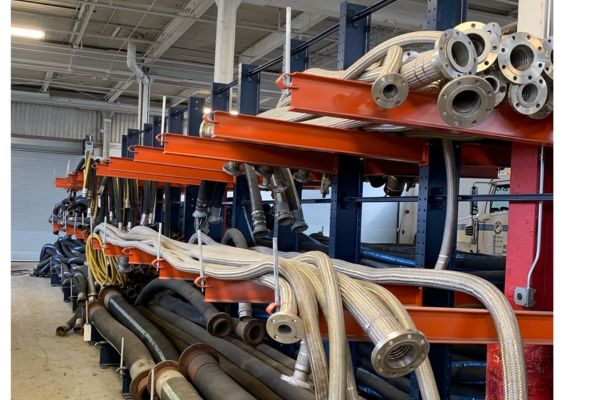
Keeping Track of Hose Performance and Lifespan
Tracking hose performance over time helps spot early signs of wear, allowing for predictive maintenance and avoiding costly failures.
The Value of Tracking Hose Performance Over Time to Spot Early Signs of Wear: Monitoring performance metrics like pressure, flow rate, and temperature helps detect abnormalities before they lead to failures. Small deviations can indicate internal wear or potential failure points that may not be visible during routine inspections.
Using Pressure Testing, Flow Monitoring, and Visual Assessments to Gauge Hose Health:
Pressure Testing: Helps ensure hoses can withstand system pressures without failure.
Flow Monitoring: Detects issues like clogs, leaks, or reductions in performance that indicate a failing hose.
Visual Inspections: Helps identify visible signs of damage, wear, or stress on the hose exterior.
How to Document and Analyze Performance Trends to Predict Future Issues: Keeping records of inspections, performance data, and repair history allows for trend analysis. Over time, patterns can emerge that highlight which hoses are prone to failure, enabling more targeted maintenance efforts.
The Benefits of Maintaining a Hose Performance Log for Accountability and Historical Reference: A performance log acts as a reference for future inspections, helping technicians identify recurring issues. It also provides historical context, allowing for better decision-making when scheduling replacements or repairs.
The Importance of Using the Right Hose for the Job
Choosing the right hose for your specific application is essential to avoid unnecessary wear, hose failure, and system inefficiencies.
Choosing Hoses Based on Application, Pressure Rating, Temperature Range, and Chemical Resistance:
Pressure Rating: Always choose a hose that can handle the maximum pressure your system will exert.
Temperature Range: Select hoses that can withstand the heat or cold associated with your application to prevent thermal degradation.
Chemical Resistance: Hoses exposed to chemicals should be made from materials resistant to corrosion or breakdown from those chemicals.
Understanding the Risks of Using a Hose That Is Not Suitable for Your Specific Needs:
Incorrect hoses can lead to leaks, ruptures, and increased wear, causing costly downtime and potential safety hazards.
For example, using a hose with an inadequate pressure rating can cause it to burst under operational stress.
How Improper Hose Selection Can Lead to Failures, Leaks, and Equipment Damage: A hose that is too weak or unsuitable for the task can wear out quickly, leading to leaks, loss of fluid, and even contamination of the entire system. Over time, this could damage other equipment, leading to expensive repairs and extended downtime.
Best Practices for Selecting Hoses Based on Material Compatibility and System Requirements:
Consider the system’s chemical composition, pressure, temperature, and flexing requirements when selecting a hose.
Consult with manufacturers and industry experts to ensure hoses are made of the appropriate materials (e.g., rubber, PTFE, stainless steel) to withstand specific conditions.
Hose Replacement Strategies: When and How to Replace Hoses
Knowing when to replace hoses and how to replace them safely is key to maintaining system efficiency and avoiding unnecessary downtime.
Signs That Indicate a Hose Should Be Replaced Immediately Versus Repaired:
Replace Immediately: Hoses with severe damage, such as cracks, cuts, bulging, or leaks, should be replaced immediately to prevent system failure.
Repairable: Minor surface abrasions or small kinks can often be repaired if the hose still has sufficient life left.
The Role of Scheduled Replacements in Maintaining Continuous Operations: Rather than waiting for hoses to fail, setting up a scheduled replacement plan helps maintain system integrity. Regularly replacing hoses before they reach the end of their lifespan ensures that systems remain operational without costly interruptions.
How to Assess the Lifespan of Different Types of Hoses and Determine Optimal Replacement Intervals:
Hoses vary in lifespan depending on factors like usage frequency, operating conditions, and material properties.
Some hoses, such as rubber hoses in high-heat environments, may need to be replaced more frequently than those in less demanding conditions.
Conducting regular inspections and performance monitoring can help predict the optimal time for replacement.
Steps for Safely Removing and Replacing Hoses to Avoid System Damage:
Preparation: Before removing a hose, shut off the system and relieve pressure to avoid injury or further system damage.
Removal: Use proper tools to remove the hose, ensuring that no residual fluid leaks or contaminates the system.
Installation: When installing a new hose, ensure it is aligned correctly, and connections are tightened securely to prevent leaks. Always follow the manufacturer’s guidelines for installation and maintenance.
Conclusion
In any industrial setting, industrial hose maintenance should be considered a priority—not an afterthought. With the potential to significantly impact your bottom line through reduced downtime, lower repair costs, and increased operational efficiency, prioritizing hose care is an investment in the future of your business. By developing a solid hose maintenance program, you’re not only protecting your equipment but also ensuring that your facility runs smoothly, safely, and profitably for years to come.
FAQ
Why is industrial hose maintenance important?
Industrial hose maintenance is crucial to prevent unexpected hose failures that can lead to equipment damage, costly downtime, and safety hazards. Regular maintenance ensures hoses remain in optimal condition, improving system performance and longevity.
How often should industrial hoses be inspected?
The frequency of hose inspections depends on factors like the hose type, usage, and environmental conditions. Generally, hoses should be inspected regularly, with high-risk hoses (e.g., high-pressure or critical application hoses) checked more frequently—at least every 3 to 6 months.
What are the most common causes of hose failure?
Common causes of hose failure include wear and tear, environmental factors like temperature extremes and UV exposure, improper installation, and over-pressurization. Regular inspections can help detect these issues early, preventing catastrophic failures.
How can I extend the lifespan of my industrial hoses?
To extend hose lifespan, select the right hose for each application, regularly inspect hoses for damage, keep hoses clean and free from contaminants, and replace them when necessary. Proactive maintenance is key to maximizing durability.
When should a hose be replaced instead of repaired?
If a hose has significant damage, such as cracks, bulges, or leaks that cannot be repaired effectively, it should be replaced. For hoses with excessive wear or nearing the end of their service life, replacement is often the best option to ensure safe and reliable operation.
What is a hose maintenance checklist?
A hose maintenance checklist includes items like inspecting the hose for abrasions, leaks, and bulges, checking fittings and connections, verifying proper alignment, and ensuring the hose is not under excessive pressure.




